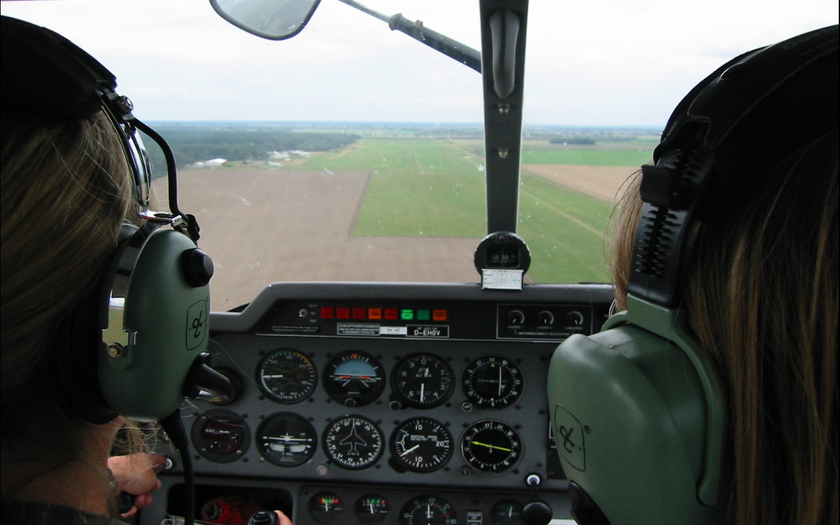In an airplane, it is not possible to pull the emergency brake in critical situations. Nor can a pilot simply “pull over” quickly. Thinking too long can cost lives – but so can acting too quickly, rashly or hastily.
Quick decision making and safe action are required. Hesitation can be life-threatening. If a pilot decides to make an emergency landing, he focuses all his concentration and energy on a safe and, if possible, controlled landing on the identified emergency landing field.
Even if a decision later turns out to be wrong, in aviation, making no decision is not an option – because it leads to even greater uncertainty and delay with potentially fatal consequences.
And whether a decision is right or wrong, we usually only know in retrospect. The best example of this is the “Miracle of the Hudson”, when Captain Chesley “Sully” Sullenberger decided against the best practice to land on the Hudson River, which in retrospect proved to be the only correct option.
The ability to make quick decisions is also a necessity at work. The danger of being distracted by trivialities is great in everyday life.
In the airline cockpit, we use various models for decision-making. In most cases, the FOR-DEC model developed by NASA. As soon as a problem arises, work is executed according to this model and action is taken without emotion and on the basis of facts.
Facts Options Risks Decision Execution Check
Have you noticed that there is no way back from the risks to the facts?
After the risks have been discussed, a decision must be made.
Have you ever experienced situations in which you wished you had made a quicker decision? Or in which you have realized in retrospect that your hesitation has led to undesirable consequences?
Making good decisions in business can ultimately make the difference between being successful or not.
We’ve all made a variety of decisions – whether it’s starting an academic course, making a career change, taking a leap into the unknown, hiring someone, laying someone off, or delegating more.
Every pilot in the cockpit uses the same common thread and thus solutions can be discussed together on the same basis.
Such a common thread is also very useful for the work of teams – crisis teams or change teams or even project teams.
If all members start from the same guiding principle, endless discussions can be avoided. We notice in our work that there is often a missing follow-up, i.e. a check whether the decision has led to the desired result. With the FORDEC model, thanks to the “C” check, there will always be a follow-up.
FORDEC is a proven and solid model. In our eyes, however, it is still expandable for companies.
And that’s where we come in as #clearedtoland.
Together with companies, we examine their needs and help them develop suitable approaches and solutions.
That is why we have gone one step further and added the human factor to the classic FORDEC and developed a completely new change and decision model called “CLEAR ME FORDPEC”. In the CLEAR ME part we focus on the human factor and in the FORDPEC part on organizational development. We have added the “P” as a plan to enable the company to plan the implementation of a decision. This is more simple in the cockpit. If, for example, a decision is made to make an intermediate landing, the processes and points up to the landing are already predefined. In the company, of course, things look different.
The model is based on a holistic approach – it analyzes existing strategies and processes taking into account business and human factors and thus enables a company to work more efficiently, especially in crisis or change situations.
If you want to know more about it – contact us.
In crisis or change situations, a common denominator or a common unified approach can be crucial in determining how to deal with them and also how you succeed anyway.
A systematic and structured approach based on a predefined process such as FORDEC, which avoids unnecessary discussions and ambiguities, facilitates decision-making.
Not making a decision is not an option.
Often it is also the fear of making a decision that paralyzes us.
Making decisions is an important skill and component to moving forward. We make decisions all the time throughout the day. Many of them at lightning speed and unconsciously. Often we are under pressure to make decisions, both professionally and privately; we are insecure and hesitate because we are afraid of the consequences. Making a decision is not always easy, it takes courage and determination and also the right mindset or the willingness to let go of something old, proven and turn to something new, unknown. Ideally, we can gather relevant information to bring about a decision. However, if we lack information, we can quickly fall into a mental block or lethargy and thus become incapable of making a decision. If we wait too long to make a decision, it is possible that someone will make a decision for us that may not be in our best interest.
But it is also important to be aware that most decisions are not irrevocable.
Making decisions is an important competence of every employee. Any uncertainty because something is unclear, for example, or the fear of consequences can paralyze an entire team.
An error culture analogous to the aviation industry and a clean debriefing can help.
We will address this in the next Fly’in Lunch on April 20, 2021 and blog, which will be the last in the series “the #clearedtoland success principle”.
We also offer keynotes, workshops, coaching and consulting. Visit our website or get a non-binding consultation on our offer for your professional and private precision landing.

